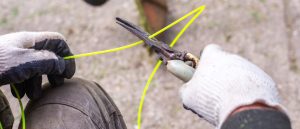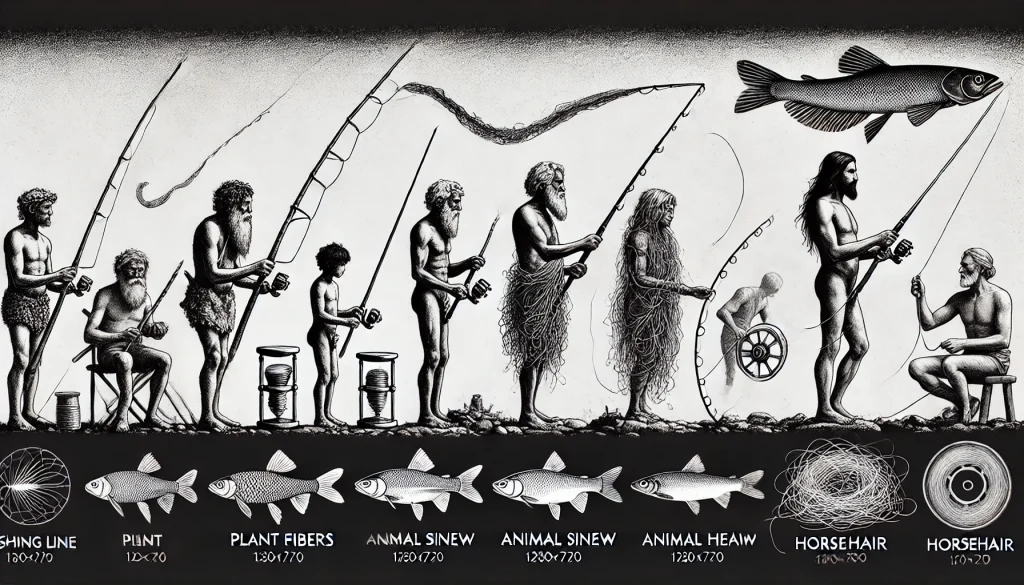Currently Empty: $0.00

Cutting braided fishing line may seem like a simple task, but it requires the right tools, techniques, and knowledge to do it effectively. Braided fishing line is known for its strength and durability, which makes it a popular choice among anglers. However, these same qualities can make cutting it cleanly a bit challenging. In this guide, we will explore the best methods and tools for cutting braided fishing line, along with some background on why this process is crucial for successful fishing.
The Evolution of Braided Fishing Line

Braided fishing line has been a staple in the angling community for decades. It originated from natural fibers like linen and silk, which were twisted together to create a stronger line. These early lines were prone to fraying and breaking, especially when exposed to moisture over time. With the advent of synthetic materials in the mid-20th century, braided fishing line underwent a significant transformation.
Modern braided fishing line is made from materials such as Dyneema, Spectra, and Dacron, which are much stronger and more resistant to wear and tear. These synthetic fibers are tightly woven to create a line that is not only incredibly strong but also thin and sensitive. This advancement has made braided line a favorite among both freshwater and saltwater anglers. However, cutting this tough, high-tech line requires the right approach.
Why Cutting Braided Fishing Line Correctly Matters
Cutting braided fishing line is more than just a practical necessity; it’s a crucial step in setting up your gear for a successful fishing trip. A clean cut ensures that the line doesn’t fray, which could lead to weakened knots and potential line failure. Frayed ends can also make it difficult to tie secure knots, which is essential for keeping your hooks, lures, and leaders firmly attached.
Additionally, using the wrong cutting method can damage your tools, especially if you’re using standard scissors or clippers not designed for braided line. This can result in jagged cuts that leave the line vulnerable to unraveling. Knowing how to cut braided fishing line properly will save you time, frustration, and potentially lost catches.
Tools You Need to Cut Braided Fishing Line
1. Braided Line Scissors
Braided line scissors are specifically designed to cut through the tough fibers of braided fishing line. These scissors have serrated blades that grip the line as they cut, ensuring a clean and precise cut every time. They are small, portable, and can easily be kept in your tackle box or pocket.
When choosing braided line scissors, look for those made from high-quality stainless steel to prevent rust and corrosion. Some models also feature ergonomic handles for comfortable use, especially during long fishing trips.
2. Line Clippers
Line clippers are another tool commonly used by anglers to cut braided fishing line. These clippers are similar to nail clippers but are stronger and often come with a built-in cutting edge specifically designed for fishing lines. They are highly portable and can be attached to a lanyard or keychain for easy access.
While line clippers are convenient, they may not always provide as clean a cut as braided line scissors. However, they are a versatile tool that can be used for both braided and monofilament lines, making them a popular choice.
3. Multi-Tools with Cutting Blades
Multi-tools are a favorite among many anglers due to their versatility. Many multi-tools come with a cutting blade designed to handle braided fishing line. These tools can be a great option if you’re looking for something that can do more than just cut line, such as pliers for removing hooks or screwdrivers for gear adjustments.
However, it’s important to ensure that the cutting blade on your multi-tool is sharp and well-maintained. A dull blade can lead to frayed cuts, which can compromise the integrity of your line.
Step-by-Step Guide on How to Cut
1. Prepare Your Tools
Before you begin, make sure you have your cutting tool of choice ready. Whether you’re using braided line scissors, line clippers, or a multi-tool, ensure that the blades are sharp and clean. Dull or dirty blades can make it difficult.
2. Hold the Line Taut
For a precise cut, hold the braided fishing line taut. You can do this by pulling the line tight between your fingers or by securing it against a solid surface. Keeping the line taut ensures that the fibers are aligned, which makes it easier to cut cleanly.
3. Position the Cutting Tool
Position your cutting tool perpendicular to the line. This angle helps ensure that you cut straight through the fibers, rather than at an angle, which can cause fraying. Make sure the cutting tool is close to the point where you want to cut the line.
4. Make the Cut
Apply steady pressure and make the cut in one smooth motion. Avoid sawing back and forth, as this can cause the line to fray. If you’re using braided line scissors, the serrated edges should grip the line and make a clean cut without much effort.
5. Inspect the Cut
After cutting, inspect the end of the line. It should be clean and free of frayed fibers. If you notice any fraying, consider re-cutting the line with a sharper tool. A clean cut is essential for tying secure knots and maintaining the line’s strength.
Tips for Maintaining Your Cutting Tools
To ensure that your braided line scissors, clippers, or multi-tool last a long time, it’s important to maintain them properly. After each use, wipe the blades clean to remove any salt, dirt, or debris. This will prevent corrosion and keep the blades sharp.
If your cutting tools start to dull, sharpen them according to the manufacturer’s instructions or replace them if sharpening is not possible. Keeping your tools in top condition ensures that you can always make clean, precise cuts.
3 Common Mistakes to Avoid
- One common mistake anglers make is using regular household scissors to cut braided fishing line. These scissors are not designed to handle the tough fibers and often result in jagged, frayed cuts.
- Another mistake is cutting the line at an angle or using a dull tool. Both of these errors can lead to fraying, which weakens the line and can cause it to break at critical moments.
- Finally, some anglers forget to inspect the cut line before tying knots. It’s important to check for any fraying or damage to ensure that your knots will hold securely.
Conclusion
Cutting braided fishing line may seem straightforward, but using the right tools and techniques is crucial for maintaining the line’s strength and integrity. Whether you’re using specialized scissors, line clippers, or a multi-tool, ensuring a clean cut will make a significant difference in your fishing success.


